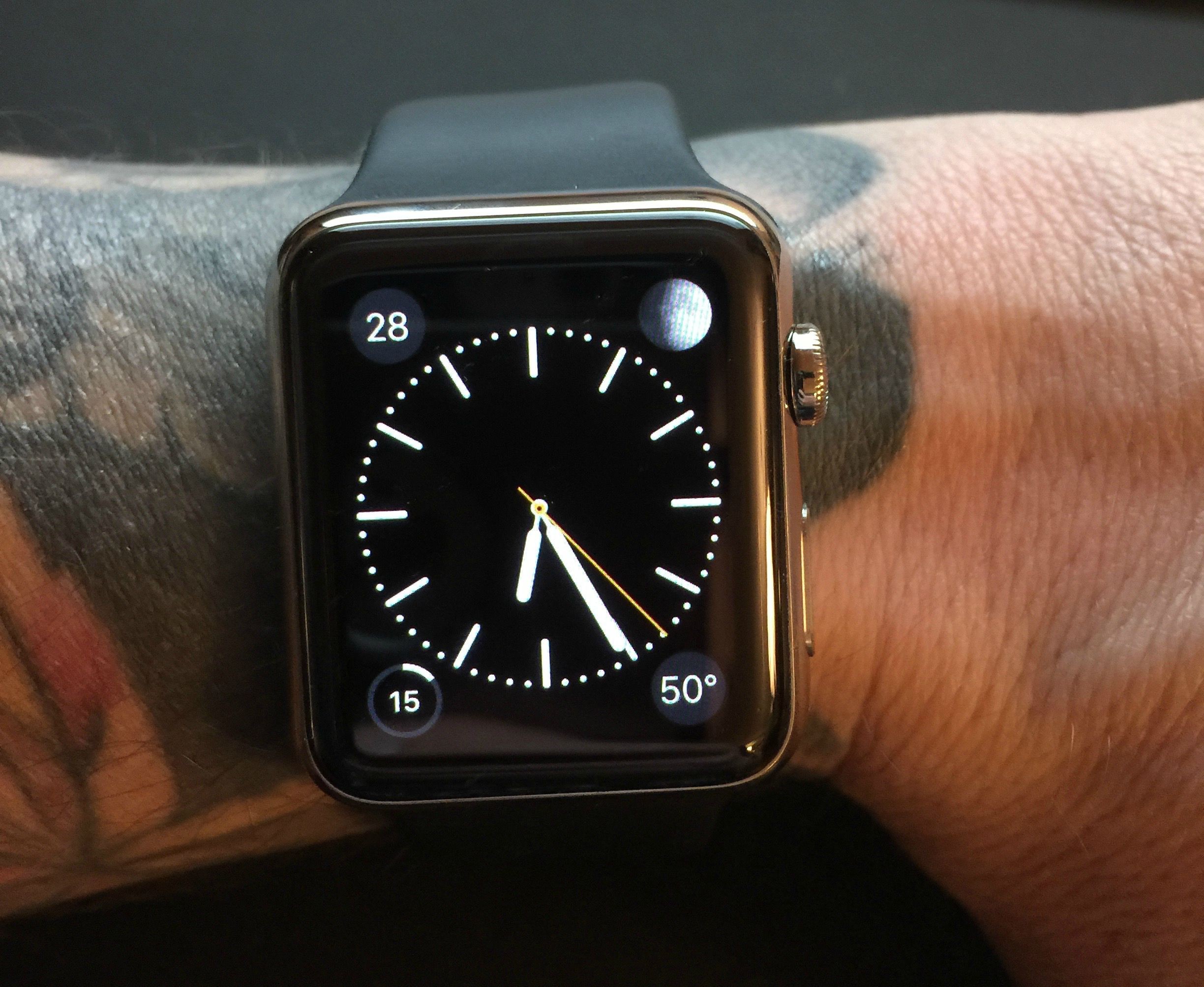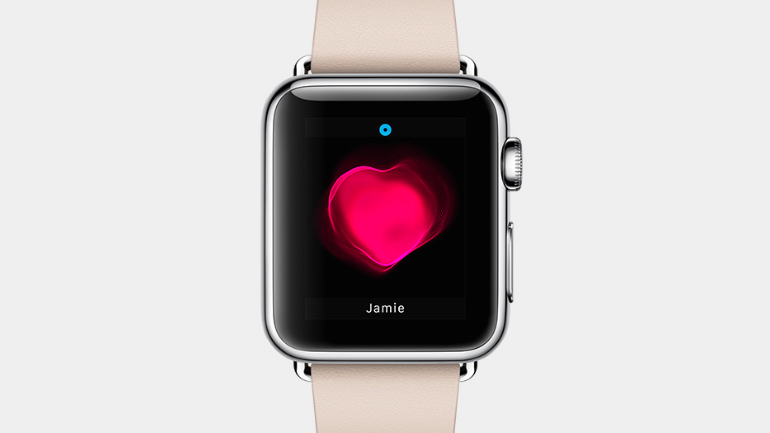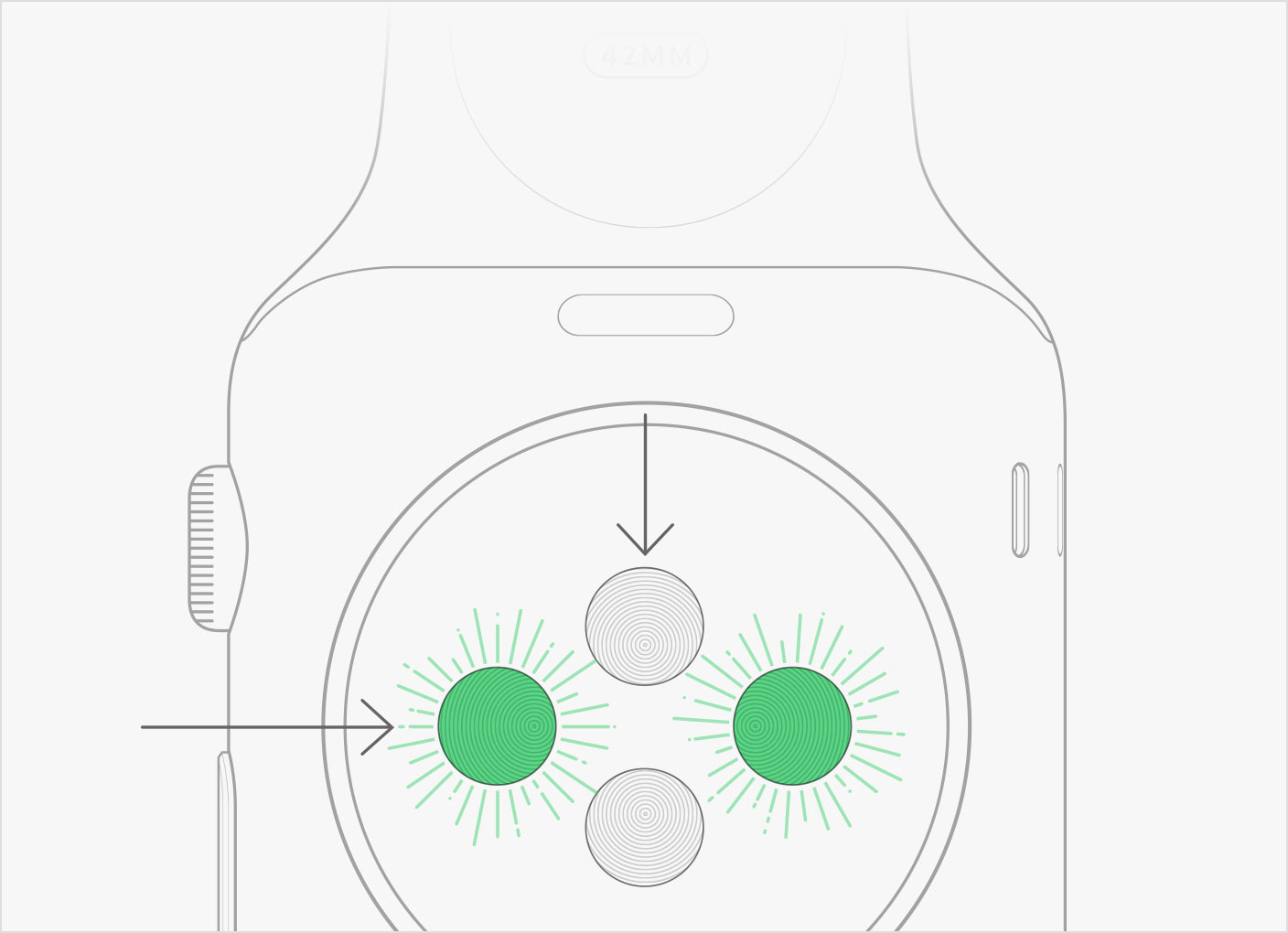Your Apple Watch can wake to the watch face, or your last activity, when you raise your wrist. Called Wrist Raise, this handy feature uses the heart rate sensor, which requires skin contact.
But according to users on social media channels like Twitter and Reddit, tattooed wrists fool the Apple Watch into thinking it’s not on a wrist in the first place, causing all sorts of issues.
For starters, the Activate on Raise Wrist function may stop working or may perform erratically. More problematic than that, people with tattooed wrists may stop receiving notifications. In addition, inaccurate heart rate readings have been reported, too, as dark tattoos can throw off Apple Watch’s heart rate sensor and cause the Workout app to pause every now and then.
And because the sensor interferes with dark-inked tattoos, the device will request your passcode after mistakenly thinking it’s lost skin contact. Another side-effect: Apple Pay, another feature that requires skin contact, gets disabled, causing you to re-enter the security PIN.
“I noticed since Friday that the wrist activation/passcode would need to be entered every time the Watch would wake,” Michael Lovell, one of the affected, tattoo-wearing Watch owners told Cult of Mac. “So I’ve had to leave that off to make the Watch usable.”
After contacting Apple Support, he had his device replaced, to no avail.
While wearing his Watch on his tattooed wrist, Michael also discovered that the Workout app would pause every few seconds during a run. He then wore his Watch on his non-tattooed other wrist. The device worked perfectly fine.
Another tattoo-wearing user shared his experienced on Reddit:
The watch would lock up every time the screen went dark and prompted me for my password. I wouldn’t receive notifications. I couldn’t figure out why especially since the watch was definitely not losing contact with my skin.
I was about to give up and call Apple tomorrow when I decided to try holding it against my hand (my left arm is sleeved and where I wear my watch is tattooed as well) and it worked. My hand isn’t tattooed and the Watch stayed unlocked. Once I put it back on the area that is tattooed with black ink the watch would automatically lock again.
And here’s a video showing so called ‘Tattoo-Gate’ in action.
Some folks have suggested that metal-based pigments used for the inking process are negatively affecting the heart rate sensors, therefore confusing the Apple Watch’s wrist detection technology.
As we explained in our post earlier this week, the heart rate monitor on the back of the Apple Watch flashes infrared or green LED lights many times a second, allowing it to detect blood flow.
Now, Apple itself says in a support document that a small percentage of users may notice that “various factors may make it impossible to get any hear rate reading at all.” The tattoo-wearing segment of Apple Watch owners may fall under Apple’s definition of a small percentage of users.
iMore did some tests of its own, concluding that “dark, solid colors seem to give the sensor the most trouble.” While lighter-colored tattoos did cause some heart rate misreadings, the sensor didn’t fail completely.
In iMore’s tests, solid black and red initially produced heart rate misreadings of up to 196 beats per minute before “failing to read skin contact entirely.” For those wondering, the wearable device works without a hiccup with scars, skin abrasions and dark-colored skin because they’re translucent.
Another Reddit user chimed in:
Oxyhemoglobin has several local peaks of absorbance which can be used for pulse oximetry: one green, one yellow, one infrared, etc. Apple uses the ones at infrared and green parts of the spectrum. Now, here’s some key facts. Melanin and ink are both equally good at absorbing frequencies over 500nm, which sadly includes the green.
But, melanin’s absorbance falls down so rapidly that by the infrared end of the spectrum its hardly absorbing anything at all. That, combined with the fact that Apple adjusts the sensitivity/light level dynamically means infrared is probably black people friendly. Ink has a much more gradual fall off, so even infrared might not work for them.
Which brings me to my next point: this isn’t necessarily a problem unique to the Apple Watch. After all, there are some technological limitations to its heart rate sensor. To reiterate, tattoo ink is opaque and that prevents light from the sensors from penetrating your skin.
Apple does not mention anything about problems with tattooed wrists on its website, which lays out how the heart rate sensor works:
Blood is red because it reflects red light and absorbs green light. Apple Watch uses green LED lights paired with light‑sensitive photodiodes to detect the amount of blood flowing through your wrist at any given moment.
When your heart beats, the blood flow in your wrist — and the green light absorption — is greater. Between beats, it’s less. By flashing its LED lights hundreds of times per second, Apple Watch can calculate the number of times the heart beats each minute — your heart rate.
If the metal-based pigments used for the inking process are indeed affecting the heart rate sensor, it’s unlikely that this technological hurdle could be overcome with a simple Watch OS firmware update.
If your wrist is tattooed and you’re experiencing hiccups with the heart rate sensor, a band-aid solution would involve using a third-party Bluetooth heart rate chest strap during workouts as Apple Watch is compatible with external heart rate monitors.
A scorched Earth solution would entail switching off Wrist Detection altogether. While that will prevent your Apple Watch from requiring a passcode every time your tattoo throws off its sensor, it will also disable Apple Pay and receiving phone calls (notifications will still come in).
Apple has not commented on the issue at press time, but we’ll update the post if we hear anything from them. In the meantime, would-be Watch buyers with tattoos are advised to schedule a try-on appointment with their nearest Apple Store and see for themselves if the device works properly on their arm.
The Apple Watch is covered by a 14-day return policy.
So, what’s your take on this?
I’m especially curious to hear what our heavily tattooed readers have to say about this issue, or should I say non-issue?
Source: Twitter, Reddit, Cult of Mac, iMore


